Tendor System: Difference between revisions
m (Added Nirduk to the yxtable) |
m ({{Region icon Anteria}}) |
||
| (3 intermediate revisions by 2 users not shown) | |||
| Line 1: | Line 1: | ||
{{WIP}} | {{WIP}}{{Region icon Anteria}} | ||
{{Infobox | {{Infobox | ||
|name = | |name = | ||
| Line 13: | Line 13: | ||
|label2 = Age | |label2 = Age | ||
|data2 = 4.568 billion years | |data2 = 4.568 billion years | ||
|label3 = | |label3 = Location | ||
|data3 =[[Omicron Cloud]] | |data3 =[[Omicron Cloud]] | ||
|label4 = | |label4 = System Mass | ||
|data4 = 1. | |data4 = 1.0011 Solar masses | ||
|label5 = Nearest star | |label5 = Nearest star | ||
|data5 = TBA | |data5 = TBA | ||
| Line 24: | Line 24: | ||
|data7 = '''Planetary system''' | |data7 = '''Planetary system''' | ||
|label8 = Semi-major axis of<br>outer known planet ([[Tsanfau]]) | |label8 = Semi-major axis of<br>outer known planet ([[Tsanfau]]) | ||
|data8 = | |data8 = 24.25 AU | ||
|label9 = Distance to Kuiper cliff | |label9 = Distance to Kuiper cliff | ||
|data9 = | |data9 = 40 AU | ||
|Header10 = '''Population''' | |Header10 = '''Population''' | ||
|data10 = '''Population''' | |data10 = '''Population''' | ||
|label11 = Stars | |label11 = Stars | ||
|data11 = 1 <sub>([[Sun (Anteria)|Sun]])</sub> | |data11 = 1 <sub>([[Sun (Anteria)|Sun]])</sub> | ||
|label12 = Known planets | |label12 = Known major planets | ||
|data12 = {{longitem|{{smaller|{{hlist| | |data12 = {{longitem|{{smaller|{{hlist|7 ([[Slahonus]]|[[Anteria]]|[[Stratos]]|[[Bieruta]]|[[Aurious]]|[[Nirduk]]|[[Tsanfau]])}}}}}} | ||
|label13 = Known dwarf planets | |label13 = Known dwarf planets | ||
|data13 = | |data13 = TBA | ||
|label14 = Known natural satellites | |label14 = Known natural satellites | ||
|data14 = | |data14 = 177+ <br><sub>(177 planetary, TBA minor planetary)</sub> | ||
|label15 = Known minor planets | |label15 = Known minor planets | ||
|data15 = | |data15 = TBA | ||
|label16 = Known Comets | |label16 = Known Comets | ||
|data16 = | |data16 = TBA | ||
|label17 = Identified rounded satellites | |label17 = Identified rounded satellites | ||
|data17 = | |data17 = 22 | ||
|header18 = '''Orbit about Galactic Center''' | |header18 = '''Orbit about Galactic Center''' | ||
|data18 = '''Orbit about Galactic Center''' | |data18 = '''Orbit about Galactic Center''' | ||
| Line 67: | Line 66: | ||
The Tendor System is the gravitationally bound system comprising the Sun and the objects that orbit it. Of those objects that orbit the Sun directly, the largest six are the planets with the remainder being smaller objects, such as dwarf planets and small Solar System bodies. | The Tendor System is the gravitationally bound system comprising the Sun and the objects that orbit it. Of those objects that orbit the Sun directly, the largest six are the planets with the remainder being smaller objects, such as dwarf planets and small Solar System bodies. | ||
{{Template:Clickable Tendor System}} | |||
==Planets== | ==Planets== | ||
| Line 75: | Line 75: | ||
* has cleared its neighbouring region of planetesimals | * has cleared its neighbouring region of planetesimals | ||
There are | There are seven planets within the Tendor system. The three inner terrestrial planets have dense, rocky compositions, few or no moons, and no ring systems; They are composed largely of refractory minerals, such as silicates, which form their crusts and mantles, and metals, such as iron and nickel, which form their cores. The three outer gas planets consist overwhelmingly of hydrogen and helium, and all possess rings of varying prominence. The rings of the gas giants Aurious and Nirduk mainly consists of dust, rock and particles ranging in size from micrometers to meters, while the rings of the ice giant Tsanfau mostly consist of ice and some radiation-processed organics. Bieruta, the fourth planet and a gas dwarf, is characterized by its gaseous exterior and rocky core, and theorized to be a failed gas giant due a lack of available material from its later formation. | ||
{| class="wikitable" style="text-align: center;" | {| class="wikitable" style="text-align: center;" | ||
|- | |- | ||
! colspan="2" style="background: #fffdd0;" | Planet | ! colspan="2" style="background: #fffdd0;" | Planet | ||
! style="background: #efe;" | | ! style="background: #efe;" | [[Slahonus]] | ||
! style="background: #efe;" | | ! style="background: #efe;" | [[Anteria]] | ||
! style="background: #efe;" | | ! style="background: #efe;" | [[Stratos]] | ||
! style="background: # | ! style="background: #fee;" | [[Bieruta]] | ||
! style="background: # | ! style="background: #ffe;" | [[Aurious]] | ||
! style="background: # | ! style="background: #ffe;" | [[Nirduk]] | ||
! style="background: # | ! style="background: #eff;" | [[Tsanfau]] | ||
|- | |- | ||
| colspan="2" style="background: #fffdd0;" | Planet | | colspan="2" style="background: #fffdd0;" | Planet visual | ||
| style="background: #000000; padding:4px;" | [[File:SlahonusPlanet.png|100px]] | | style="background: #000000; padding:4px;" | [[File:SlahonusPlanet.png|100px]] | ||
| style="background: #000000; padding:4px;" | [[File:AnteriaPlanet.png|100px]] | | style="background: #000000; padding:4px;" | [[File:AnteriaPlanet.png|100px]] | ||
| Line 98: | Line 98: | ||
|- | |- | ||
| colspan="2" style="background: #fffdd0;" | [[wikipedia:Astronomical symbol|Astronomical symbol]] | | colspan="2" style="background: #fffdd0;" | [[wikipedia:Astronomical symbol|Astronomical symbol]] | ||
| style="background: # | | style="background: #efe;" | [[File:SlahonusAstro.png|20px|Slahonus]] | ||
| style="background: # | | style="background: #efe;" | [[File:AnteriaAstro.png|20px|Anteria]] | ||
| style="background: # | | style="background: #efe;" | [[File:StratosAstro.png|20px|Stratos]] | ||
| style="background: # | | style="background: #fee;" | [[File:BierutaAstro.png|20px|Bieruta]] | ||
| style="background: # | | style="background: #ffe;" | [[File:AuriousAstro.png|20px|Aurious]] | ||
| style="background: # | | style="background: #ffe;" | [[File:NirdukAstro.png|20px|Nirduk]] | ||
| style="background: # | | style="background: #eff;" | [[File:TsanfauAstro.png|20px|Tsanfau]] | ||
|- | |||
| style="background: #fffdd0;" | Semi-major axis | |||
| style="background: #fffdd0;" | km<br>AU | |||
| style="background: #efe;" | 49,807,115<br>0.33294 | |||
| style="background: #efe;" | 149,597,890<br>1.00000 | |||
| style="background: #efe;" | 364,233,420<br>2.43475 | |||
| style="background: #fee;" | 753,705,490<br>5.03821 | |||
| style="background: #ffe;" | 1,251,027,150<br>8.3626 | |||
| style="background: #ffe;" | 2,200,225,600<br>14.7076 | |||
| style="background: #eff;" | 3,628,242,000<br>24.2533 | |||
|- | |||
| style="background: #fffdd0;" | Equatorial Radius | |||
| style="background: #fffdd0;" | km<br>:⊕ | |||
| style="background: #eeffee;" | 2,967.33<br>0.4658 | |||
| style="background: #eeffee;" | 6,371.01<br>1 | |||
| style="background: #eeffee;" | 6,237.42<br>0.97897 | |||
| style="background: #fee;" | 14,099.6<br>2.2131 | |||
| style="background: #ffe;" | 64,675<br>10.151 | |||
| style="background: #ffe;" | 53,637<br>8.419 | |||
| style="background: #eff;" | 24,695<br>3.876 | |||
|- | |- | ||
| style="background: #fffdd0;" | [[wikipedia:Mass|Mass]] | | style="background: #fffdd0;" | [[wikipedia:Mass|Mass]] | ||
| style="background: #fffdd0;" | | | style="background: #fffdd0;" | kg<br>:⊕ | ||
| style="background: # | | style="background: #efe;" | 6.2111×10<sup>23</sup><br>0.1040 | ||
| style="background: # | | style="background: #efe;" | 5.9722×10<sup>24</sup><br>1 | ||
| style="background: # | | style="background: #efe;" | 5.4204×10<sup>24</sup><br>0.9076 | ||
| style="background: # | | style="background: #fee;" | 2.7603×10<sup>25</sup><br>4.622 | ||
| style="background: # | | style="background: #ffe;" | 1.4437×10<sup>27</sup><br>241.7 | ||
| style="background: # | | style="background: #ffe;" | 6.1729×10<sup>26</sup><br>103.4 | ||
| style="background: # | | style="background: #eff;" | 9.1345×10<sup>25</sup><br>15.30 | ||
|- | |||
| style="background: #fffdd0;" | Equatorial Gravity | |||
| style="background: #fffdd0;" | m/s<sup>2</sup> | |||
| style="background: #efe;" | 4.708 | |||
| style="background: #efe;" | 9.807 | |||
| style="background: #efe;" | 9.300 | |||
| style="background: #fee;" | 9.267 | |||
| style="background: #ffe;" | 23.034 | |||
| style="background: #ffe;" | 14.320 | |||
| style="background: #eff;" | 9.996 | |||
|- | |||
| style="background: #fffdd0;" | Escape Velocity | |||
| style="background: #fffdd0;" | m/s | |||
| style="background: #efe;" | 5.286 | |||
| style="background: #efe;" | 11.186 | |||
| style="background: #efe;" | 10.770 | |||
| style="background: #fee;" | 16.165 | |||
| style="background: #ffe;" | 54.584 | |||
| style="background: #ffe;" | 39.193 | |||
| style="background: #eff;" | 22.220 | |||
|- | |- | ||
| style="background: #fffdd0;" | | | style="background: #fffdd0;" | Orbital period | ||
| style="background: #fffdd0;" | | | style="background: #fffdd0;" | days<br>[[wikipedia:Year|years]] | ||
| style="background: # | | style="background: #efe;" | 70.169<br>0.1921 | ||
| style="background: # | | style="background: #efe;" | 365.256363<br>1.0000 | ||
| style="background: # | | style="background: #efe;" | 1387.648<br>3.7992 | ||
| style="background: # | | style="background: #fee;" | 4130.59<br>11.3089 | ||
| style="background: # | | style="background: #ffe;" | 8833.03<br>24.1835 | ||
| style="background: # | | style="background: #ffe;" | 20602.05<br>56.4053 | ||
| style="background: # | | style="background: #eff;" | 43626.87<br>119.4439 | ||
|- | |- | ||
| style="background: #fffdd0;" | | | style="background: #fffdd0;" | Mean orbital speed | ||
| style="background: #fffdd0;" | | | style="background: #fffdd0;" | km/s | ||
| style="background: # | | style="background: #efe;" | 51.619 | ||
| style="background: # | | style="background: #efe;" | 29.785 | ||
| style="background: # | | style="background: #efe;" | 19.088 | ||
| style="background: # | | style="background: #fee;" | 13.270 | ||
| style="background: # | | style="background: #ffe;" | 10.300 | ||
| style="background: # | | style="background: #ffe;" | 7.766 | ||
| style="background: # | | style="background: #eff;" | 6.048 | ||
|- | |- | ||
| style="background: #fffdd0;" | Sidereal | | style="background: #fffdd0;" | Sidereal rotation period | ||
| style="background: #fffdd0;" | days | | style="background: #fffdd0;" | days | ||
| style="background: # | | style="background: #efe;" | 70.16922 | ||
| style="background: # | | style="background: #efe;" | 0.99726968 | ||
| style="background: # | | style="background: #efe;" | 1.051208 | ||
| style="background: # | | style="background: #fee;" | 0.83274 | ||
| style="background: # | | style="background: #ffe;" | 0.42217 | ||
| style="background: # | | style="background: #ffe;" | 0.43141 | ||
| style="background: # | | style="background: #eff;" | 0.72529 | ||
|- | |- | ||
| colspan="2" style="background: #fffdd0;" | [[wikipedia:Atmosphere|Atmospheric]] composition | | colspan="2" style="background: #fffdd0;" | [[wikipedia:Atmosphere|Atmospheric]] composition | ||
| style="background: # | | style="background: #efe;" | O<sub>2</sub>, [[wikipedia:Sodium|Na]], [[wikipedia:Potassium|K]] | ||
| style="background: # | | style="background: #efe;" | [[wikipedia:Nitrogen|N<sub>2</sub>]], [[wikipedia:Oxygen|O<sub>2</sub>]], [[wikipedia:Argon|Ar]], CO<sub>2</sub> | ||
| style="background: # | | style="background: #efe;" | N<sub>2</sub>, [[wikipedia:Methane|CH<sub>4</sub>]], [[wikipedia:Carbon Dioxide|CO<sub>2</sub>]], Ar | ||
| style="background: # | | style="background: #fee;" | [[wikipedia:Hydrogen|H<sub>2</sub>]], [[wikipedia:Helium|He]], N<sub>2</sub>, Ar | ||
| style="background: # | | style="background: #ffe;" | H<sub>2</sub>, He | ||
| style="background: # | | style="background: #ffe;" | H<sub>2</sub>, He | ||
| style="background: # | | style="background: #eff;" | H<sub>2</sub>, He, CH<sub>4</sub> | ||
|- | |- | ||
| colspan="2" style="background: #fffdd0;" | Number of known [[wikipedia:Natural satellite|moons]] | | colspan="2" style="background: #fffdd0;" | Number of known [[wikipedia:Natural satellite|moons]] | ||
| style="background: # | | style="background: #efe;" | 0 | ||
| style="background: # | | style="background: #efe;" | 1 | ||
| style="background: # | | style="background: #efe;" | 3 | ||
| style="background: # | | style="background: #fee;" | 8 | ||
| style="background: # | | style="background: #ffe;" | 77 | ||
| style="background: # | | style="background: #ffe;" | 65 | ||
| style="background: # | | style="background: #eff;" | 23 | ||
|- | |- | ||
| colspan="2" style="background: #fffdd0;" | [[wikipedia:Planetary ring|Rings?]] | | colspan="2" style="background: #fffdd0;" | [[wikipedia:Planetary ring|Rings?]] | ||
| style="background: # | | style="background: #efe;" | No | ||
| style="background: # | | style="background: #efe;" | No | ||
| style="background: # | | style="background: #efe;" | No | ||
| style="background: # | | style="background: #fee;" | No | ||
| style="background: # | | style="background: #ffe;" | Yes | ||
| style="background: # | | style="background: #ffe;" | Yes | ||
| style="background: # | | style="background: #eff;" | Yes | ||
|- | |||
| style="background: #fffdd0;" | Axial tilt | |||
| style="background: #fffdd0;" | deg. | |||
| style="background: #efe;" | 0.04 | |||
| style="background: #efe;" | 23.43928 | |||
| style="background: #efe;" | 11.719 | |||
| style="background: #fee;" | 6.515 | |||
| style="background: #ffe;" | 25.75 | |||
| style="background: #ffe;" | 3.70 | |||
| style="background: #eff;" | 32.69 | |||
|- | |- | ||
|} | |} | ||
{{Template:Anteria info pages}} | |||
{{Template:Tendor system table}} | {{Template:Tendor system table}} | ||
<!--{{Tendor System table}}--> | <!--{{Tendor System table}}--> | ||
Latest revision as of 13:59, 27 June 2021
This article is incomplete because it is pending further input from participants, or it is a work-in-progress by one author. Please comment on this article's talk page to share your input, comments and questions. Note: To contribute to this article, you may need to seek help from the author(s) of this page. |
 The Sun and planets of the Tendor System (distances not to scale) | |
| Age | 4.568 billion years |
|---|---|
| Location | Omicron Cloud |
| System Mass | 1.0011 Solar masses |
| Nearest star | TBA |
| Nearest planetary system | TBA |
| Planetary system | |
| Semi-major axis of outer known planet (Tsanfau) | 24.25 AU |
| Distance to Kuiper cliff | 40 AU |
| Population | |
| Stars | 1 (Sun) |
| Known major planets | |
| Known dwarf planets | TBA |
| Known natural satellites | 177+ (177 planetary, TBA minor planetary) |
| Known minor planets | TBA |
| Known Comets | TBA |
| Identified rounded satellites | 22 |
| Orbit about Galactic Center | |
| Invariable-to-galactic plane inclination | 60.19° (ecliptic) |
| Distance to Galactic Center | 27,000 ± 1,000 ly |
| Orbital speed | 220 km/s (140 mi/s) |
| Orbital period | 225–250 Myr |
| Star-related properties | |
| Spectral type | G2V |
| Frost line | ≈5 AU |
| Distance to heliopause | ≈120 AU |
| Hill sphere radius | ≈1–3 ly |
The Tendor System is the gravitationally bound system comprising the Sun and the objects that orbit it. Of those objects that orbit the Sun directly, the largest six are the planets with the remainder being smaller objects, such as dwarf planets and small Solar System bodies.
| The Tendor System clickable scheme | |||||||||||||||||||
 |
 |
 |
 |
||||||||||||||||
| Sun | Slahonus | Anteria | Stratos | Lesser belt | Bieruta | Greater belt | Aurious | Nirduk | Tsanfau | Border belt | |||||||||
Planets
A planet is an astronomical body orbiting a star or stellar remnant that
- is massive enough to be rounded by its own gravity,
- is not massive enough to cause thermonuclear fusion, and
- has cleared its neighbouring region of planetesimals
There are seven planets within the Tendor system. The three inner terrestrial planets have dense, rocky compositions, few or no moons, and no ring systems; They are composed largely of refractory minerals, such as silicates, which form their crusts and mantles, and metals, such as iron and nickel, which form their cores. The three outer gas planets consist overwhelmingly of hydrogen and helium, and all possess rings of varying prominence. The rings of the gas giants Aurious and Nirduk mainly consists of dust, rock and particles ranging in size from micrometers to meters, while the rings of the ice giant Tsanfau mostly consist of ice and some radiation-processed organics. Bieruta, the fourth planet and a gas dwarf, is characterized by its gaseous exterior and rocky core, and theorized to be a failed gas giant due a lack of available material from its later formation.
| Planet | Slahonus | Anteria | Stratos | Bieruta | Aurious | Nirduk | Tsanfau | |
|---|---|---|---|---|---|---|---|---|
| Planet visual | 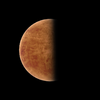
|
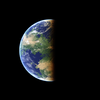
|
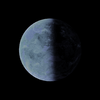
|
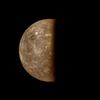
|
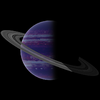
|
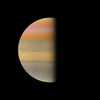
|
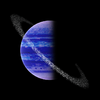
| |
| Astronomical symbol | Stratos | Bieruta | Aurious | Nirduk | Tsanfau | |||
| Semi-major axis | km AU |
49,807,115 0.33294 |
149,597,890 1.00000 |
364,233,420 2.43475 |
753,705,490 5.03821 |
1,251,027,150 8.3626 |
2,200,225,600 14.7076 |
3,628,242,000 24.2533 |
| Equatorial Radius | km :⊕ |
2,967.33 0.4658 |
6,371.01 1 |
6,237.42 0.97897 |
14,099.6 2.2131 |
64,675 10.151 |
53,637 8.419 |
24,695 3.876 |
| Mass | kg :⊕ |
6.2111×1023 0.1040 |
5.9722×1024 1 |
5.4204×1024 0.9076 |
2.7603×1025 4.622 |
1.4437×1027 241.7 |
6.1729×1026 103.4 |
9.1345×1025 15.30 |
| Equatorial Gravity | m/s2 | 4.708 | 9.807 | 9.300 | 9.267 | 23.034 | 14.320 | 9.996 |
| Escape Velocity | m/s | 5.286 | 11.186 | 10.770 | 16.165 | 54.584 | 39.193 | 22.220 |
| Orbital period | days years |
70.169 0.1921 |
365.256363 1.0000 |
1387.648 3.7992 |
4130.59 11.3089 |
8833.03 24.1835 |
20602.05 56.4053 |
43626.87 119.4439 |
| Mean orbital speed | km/s | 51.619 | 29.785 | 19.088 | 13.270 | 10.300 | 7.766 | 6.048 |
| Sidereal rotation period | days | 70.16922 | 0.99726968 | 1.051208 | 0.83274 | 0.42217 | 0.43141 | 0.72529 |
| Atmospheric composition | O2, Na, K | N2, O2, Ar, CO2 | N2, CH4, CO2, Ar | H2, He, N2, Ar | H2, He | H2, He | H2, He, CH4 | |
| Number of known moons | 0 | 1 | 3 | 8 | 77 | 65 | 23 | |
| Rings? | No | No | No | No | Yes | Yes | Yes | |
| Axial tilt | deg. | 0.04 | 23.43928 | 11.719 | 6.515 | 25.75 | 3.70 | 32.69 |

